
Selecting the right dehumidifier is a minefield for many people as brands send out conflicting information trying to persuade consumers to buy. Do you need a desiccant dehumidifier or a compressor model? Our sales are fairly even between the two technologies which puts us in an unique situation to provide unbiased advice.
There are two types of dehumidifiers: desiccant and compressor. At Meaco, we manufacture and sell an equal amount of both types of technologies, so we are uniquely placed to give unbiased advice on which would be best for your needs. Both types of appliance will help prevent mould and damp by extracting water.
Because there are two different types of dehumidifier technology on the market, confusion comes when someone has to decide which one to buy. Below is a cut-and-keep guide to making the right choice.
Generally speaking, a compressor dehumidifier is suitable for a room with an air temperature above 10°C, and a desiccant dehumidifier is more suited for temperatures below 10°C.
So, there are 6 key factors which may help you decide whether a desiccant or compressor dehumidifier suits you best:
- What is the temperature of the space you want to use your dehumidifier?
- Will a dehumidifier keep the room warm and dry?
- Can a dehumidifier dry laundry?
- How much does a dehumidifier weigh and how easy is it to move around?
- How much does a dehumidifier cost to run?
- And how much noise does a dehumidifier generate?
Compressor dehumidifiers are the established way of doing things having been around for 50+ years. They work by creating a cold surface and when the warm, damp air from within the room comes into contact with the cold surface, condensation forms, and the water is removed from the air. Jump to the comparison table.
A desiccant dehumidifier has no compressor and does not use a cold surface to extract the excess moisture from the air. Instead, it has a desiccant wheel that absorbs the moisture from the air, in a similar way to a sponge. The desiccant is regenerated by an internal heater and fan so that the process can be repeated time and time again. Jump to the comparison table.
Main applications to consider when choosing between dehumidifier types:
Which type of dehumidifier is best for cold or cooler conditions (temperature is below 10°C)? When the room air temperature is likely to fall below 10°C, for example in a conservatory, garage or colder home, a desiccant dehumidifier is the most suitable type. This is because, desiccant dehumidifiers maintain a consistent performance, regardless of the surrounding temperature.
Compressor dehumidifiers, on the other hand, need the inside of the machine to be colder than the air within the room in order for it to perform correctly. So, the colder the room, the harder the dehumidifier has to work to create that cold surface. As the temperature starts to fall down towards 10°C, the chances are that the inside of the dehumidifier will get close to freezing, increasing the chances of ice forming on the dehumidifier’s cooling coils. Below 10°C, compressor dehumidifiers are programmed to spend more and more of their time defrosting themselves rather than dehumidifying.
Pictured: Desiccant dehumidifiers are recommended for cold rooms although the MeacoDry Arete® One compressor dehumidifier also works well.
As a rule of thumb we would always recommend a desiccant dehumidifier if the room temperature is below 10°C, a desiccant dehumidifier or a large compressor dehumidifier (either a 20L or 25L) if the room temperature is between 10°C and 15°C and any type of dehumidifier, including a small compressor dehumidifier (10L or 12L), if the room temperature is above 15°C.
Below 10°C: desiccant dehumidifier only
Between 10°C and 15°C: desiccant dehumidifier or a large compressor dehumidifier (20L or 25L)
Above 15°C: desiccant dehumidifier or any size compressor dehumidifier (10L, 12L, 20L or 25L)
Small compressor dehumidifiers used in rooms below 15°C and large compressor dehumidifiers used in rooms below 10°C will not perform well. Having said that, you will see that both of the larger MeacoDry Arete® One dehumidifiers are Which? Best Buys and in their reviews found that they both performed better than expected at 10°C and that the 25L model was exceptional. Desiccant dehumidifiers (such as the Meaco DD8L) will perform the same regardless of the room temperature.
Desiccant dehumidifiers are recommended for cold rooms although the Arete® One 20L and 25L compressor dehumidifiers also work well, as you can see here in the classic car garage.

Which type of dehumidifier is best to keep your house warm and dry?
Most customers are looking for a dehumidifier to keep their home condensation free. Or to tackle the problem of too much humidity in the air causing damp and mould. They need a dehumidifier that will take excess moisture out of the air, and some also like it to warm up the room where it’s operating.
Both compressor and desiccant dehumidifiers will warm the air up slightly – the air naturally warms up as it passes through the dehumidifier. The air coming out of the compressor dehumidifier will be about 2°C warmer. This will not warm up the room the dehumidifier is being used in (and will actually feel cold to touch! This is because the air is moving). However,the air coming out of a desiccant dehumidifier will be about 10-12°C warmer and will have a significant impact on the temperature of the room its being used in – think of it as a 2 in 1 dehumidifier and heater!
So, if you are putting the dehumidifier into a hallway that is on the chilly side, the desiccant dehumidifier makes sense. If the hallway is already nice and toasty then the compressor dehumidifier is the correct option.
So, for a cold room – the winner is desiccant. For a warm room – the winner is compressor.
Is a desiccant dehumidifier good for drying laundry?
Drying washing indoors is one of the most common reasons why homes suffer from condensation, damp and mould. Laundry dries because the air around it is drier than itself. So the washing gives up the moisture in order to be in equilibrium with its surroundings. However, the moisture from the laundry has to go somewhere and this leads to condensation, damp and mould. Using a dehumidifier not only creates a dry atmosphere and blows air across the wet washing speeding up its drying time, it also captures the excess moisture from the clothes and prevents it from causing problems in your house such as condensation, damp or mould.
Drying washing using a dehumidifier works in the same way as drying the laundry on a line in the summer – honest! The laundry dries fastest outside on a dry, warm, windy day. And the laundry inside will dry faster if the warm, dry air created by the dehumidifier hits the clothes.
Both desiccant and compressor dehumidifiers are good at drying laundry. A desiccant dehumidifier tends to have a larger top speed air flow than a compressor dehumidifier and the air coming out of the dehumidifier is warmer (giving it that extra edge).
The DD8L Zambezi has a unique low energy drying cycle for laundry which makes it the best desiccant for drying laundry, as well as a lourve which directs the airflow onto the clothes. Although compressor dehumidifiers don’t have the additional heat they are cheaper to run and therefore can dry a load of laundry at less of a cost than a desiccant. Many compress dehumidifiers, including our MeacoDry Arete® One range, have dedicated laundry modes to dry your laundry in 6 hours.
For drying washing, the winners are the DD8L Zambezi and for low cost drying the MeacoDry Arete® One range.
Pictured: Desiccant dehumidifiers can be used to dry washing cost-effectively.
Product features to consider before purchasing:
Planning on moving the dehumidifier around the house? You’ll need to know which weighs less, a desiccant or compressor dehumidifier.
However, there may be times when you want to move the dehumidifier around. For example, you might have built-in wardrobes in a bedroom that are prone to mould growth. You might have the dehumidifier upstairs on the landing but need to move it downstairs to dry the washing, or you might like to move it into a conservatory now and again or use it to dry out a poorly ventilated bathroom.
Compressors add about 6 kilograms to the weight of a dehumidifier, so carrying a desiccant dehumidifier around is a lot easier than carrying a compressor dehumidifier around. However, most compressor dehumidifiers come with castors, making them more portable.
Carrying your dehumidifier – the winner is desiccant.
Energy Consumption – how much does a dehumidifier cost to run?
Customers are understandably interested in how much it costs to run a dehumidifier. Compressor dehumidifiers are in general cheaper to run. However, a desiccant releases its extra energy as heat. So there will be a cost to run your dehumidifier, but you are getting heat back into your home, meaning you can reduce your central heating accordingly. And that has a positive knock-on effect on your bills. You have to decide if you want or need this additional warmth or if you just want the cheapest dehumidifier to run.
For example, in our compressor range, we have the Meaco Low Energy 12L Dehumidifier, running at just 4p / kWh as well as our MeacoDry ABC 12L, running at just 4p / hour based on 26.35p / kWh. That means, you can have the dehumidifier on 24 hours a day, maintaining your home humidity levels for just 96p per day.
So, for low energy and low cost operation – the winner is compressor dehumidifiers.
The good thing is, whichever dehumidifier you choose, a compressor or a desiccant, the dehumidifier will be removing cold, damp air from your home, meaning you don’t have to put your heating on as high – saving you money on your energy bills!
Noise levels – how much noise does a dehumidifier make?
This is an area where dehumidifiers have changed a lot over the past 5-10 years. It used to be the case that a desiccant dehumidifier on low fan speed was your quietest option, but a few years ago the MeacoDry ABC Range changed all of that with 10 and 12l models at just 36dB (close to the sound of a whisper). And then, we changed it again with the new Arete® One 10 and 12L compressor dehumidifiers which are even quieter at 35dB. So you can now buy a dehumidifier that is the quietest and cheapest to run.
For quiet operation, the winner is Meaco ABC 10L and 12L and MeacoDry Arete® One 10 and 12L Dehumidifier and Air Purifier. These dehumidifiers are all a whisper-quiet 35/36dB.
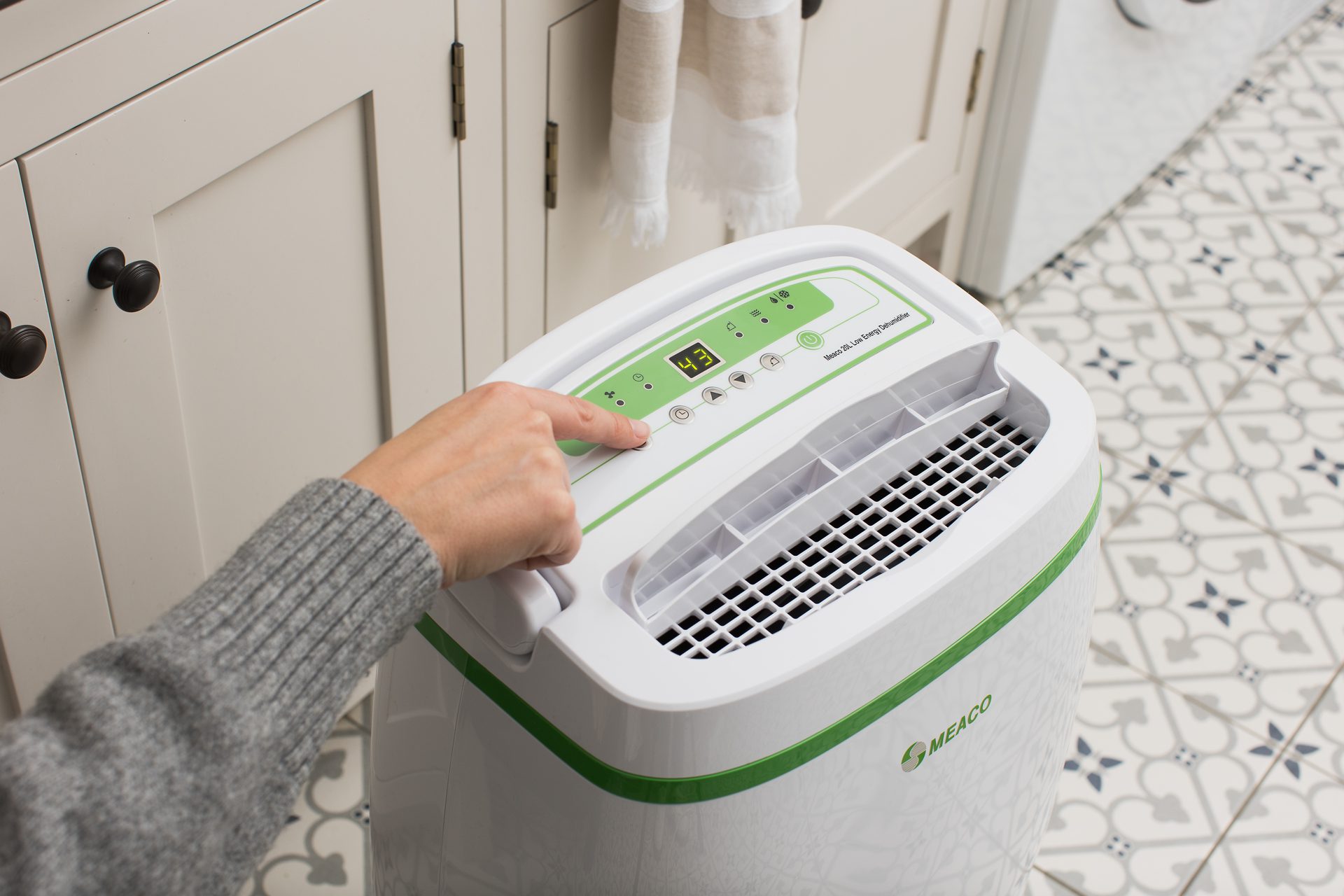
Which Dehumidifiers Can Do More Than Just Extract Moisture, Which Can Double Up As An Air Purifier As Well?
Many dehumidifiers can now be fitted with HEPA filters so they can purify the intake air as well as extracting moisture. At Meaco, we supply medical-grade H13 HEPA filters to selected compressor dehumidifiers. These can retain 99.75% particles as small as 0.3 micrometers in diameter, making it great for people with allergies like hayfever or other respiratory medical conditions such as asthma.
Because of the heat elements and sensitive parts of a desiccant dehumidifier, we do not supply things like HEPA filters. By putting anything which reduces the air intake onto the dehumidifier, we’re reducing its efficiency and can harm the machine. Equally, if things like sawdust from a garage/workshop got into the mechanics, you could be serving a short life sentence for your dehumidifier.
However, compressor dehumidifiers like the MeacoDry Arete® One and Meaco Low Energy range, are supplied with a H13 HEPA filter. It can be easily inserted into the dehumidifier turning it into a combined dehumidifier and air purifier. You can use this as much or as little as you want – the filter doesn’t have to be in the unit all the time, however when it is, the air in your home is being purified of dust, dirt, allergens, mould spores and VOCs! It’s important HEPA filters are replaced when they change colour from white to dark grey, this tends to be around every 3 months.
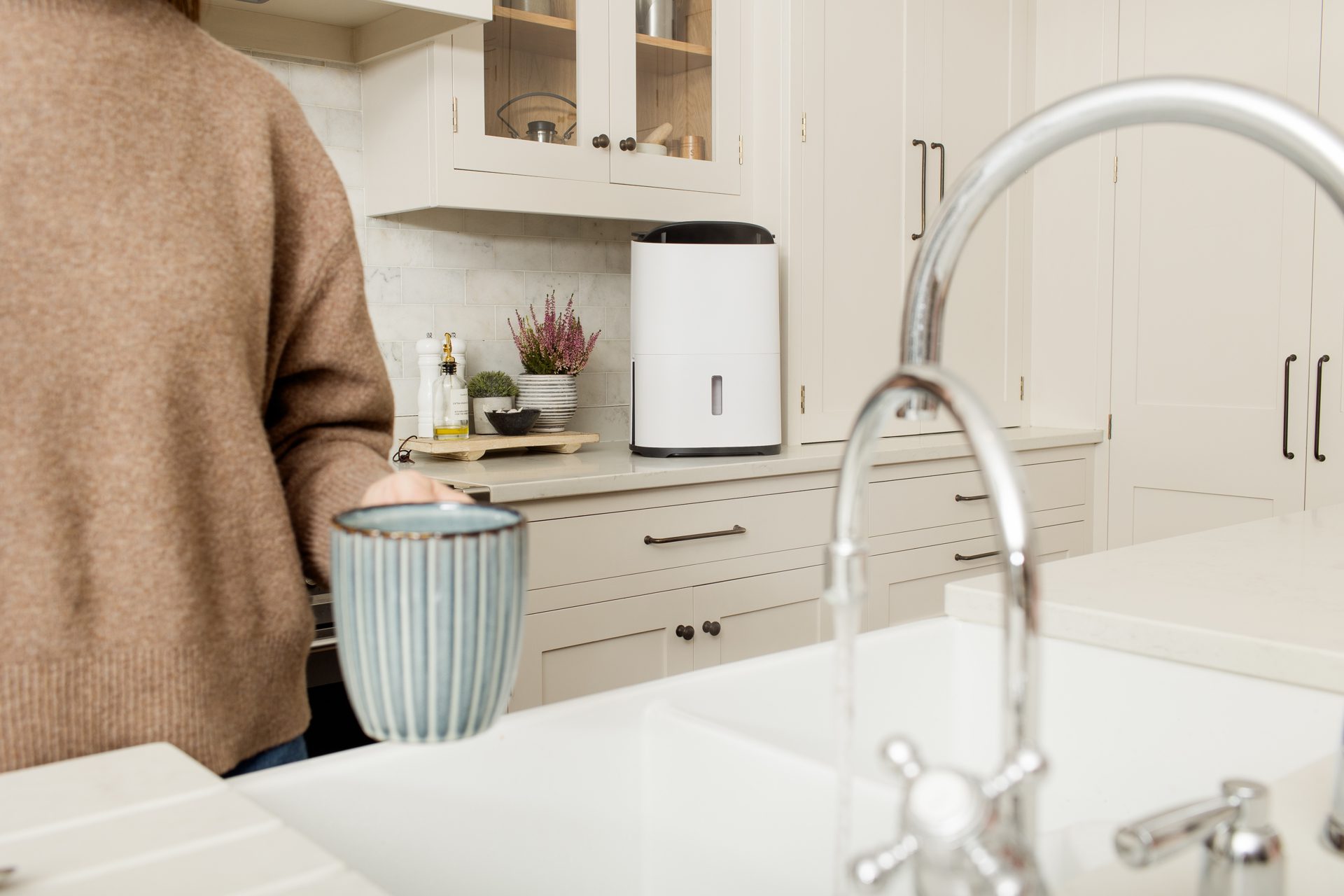
Let’s summarise the desiccants vs compressor dehumidifier debate, each is useful in different applications:
Desiccant
Compressor
Effective in which temperatures:
Desiccant:
Works well in all temperatures and are the recommend dehumidifier below 10°C
Compressor:
Only effective in spaces over 10°C, performs best at 16°C and above
Does it provide heat to the room?
Desiccant:
Yes, desiccants emit some additional warmth which can be useful
Compressor:
No, this does not provide additional heat
Are they effective when drying washing?
Desiccant:
Yes, actually optimal as they extract moisture and add warmth to drying laundry
Compressor:
Yes, these will successfully help you to dry washing indoors
Laundry mode available?
Desiccant:
Most Meaco dehumidifiers come with Laundry Modes. Check the technical specifications for more information.
Compressor:
Most Meaco dehumidifiers come with Laundry Modes. Check the technical specifications for more information.
Which is lighter in weight?
Desiccant:
Lightest and therefore easiest to move
Compressor:
The equivalent sized compressor dehumidifier will weigh an additional 6kg, however lots come with castors
Which has a cheaper cost to run?
Desiccant:
Desiccants are more expensive to run, our MeacoDry DD8L costs 9p / kWh
Compressor:
Compressors are cheaper as a general rule. Our MeacoDry Arete® One 10L costs just 4p / kWh
Which dehumidifier uses less electricity?
Desiccant:
Around 330 watts at 20°C and 60%rh
Compressor:
Between 150-260 watts depending on the size at 20°C and 60%rh
Which generates the lowest noise levels?
Desiccant:
Traditionally quieter, the 8L desiccants in our range are 39 dB
Compressor:
The latest ABC and Arete® dehumidifiers are Quiet Mark accredited, measuring 35dB and above.
Which has the longest lifespan?
Desiccant:
Lifespan is dependent on a lot of factors including the environment and how well the dehumidifier is looked after
Compressor:
Lifespan is dependent on a lot of factors including the environment and how well the compressor is looked after, however, our Arete® range is the only range to come with a free 5 year warranty
Which has the best sizing options?
Desiccant:
Because of the mechanics, desiccants only come in 8L however this is suitable from a 1 bed flat to a 5 bed house
Compressor:
Multiple sizes available for different sized houses
Which can clean the air as well as dehumidify?
Desiccant:
Dehumidify only
Compressor:
Our MeacoDry Arete® One and Meaco Low Energy range are combined dehumidifiers and air purifiers
Best application
Desiccant:
Lower temperatures or places you may want some extra warmth. For example, an unheated conservatory.
Compressor:
Applications over 10C. These are cheaper to run and available in more sizes. Great for home living.
You can see that it is not as simple as many dehumidifier brands make out when they claim that a desiccant dehumidifier – or a compressor dehumidifier is best. This is because they are normally biased towards one or other of the technologies. Hopefully the above will help – but if you are still not sure what’s best for you, give us a call on 01483 234900, email customerservice@meaco.com or comment below and we will be happy to talk it through with you.
Browse our ranges: Compressor Dehumidifiers, Desiccant Dehumidifiers
Products featured: Meaco ABC 12L , Arete® One 10 and 12L Dehumidifier and Air Purifier, Meaco DD8L, Meaco DD8L Zambezi, Meaco Low Energy Dehumidifier 12L




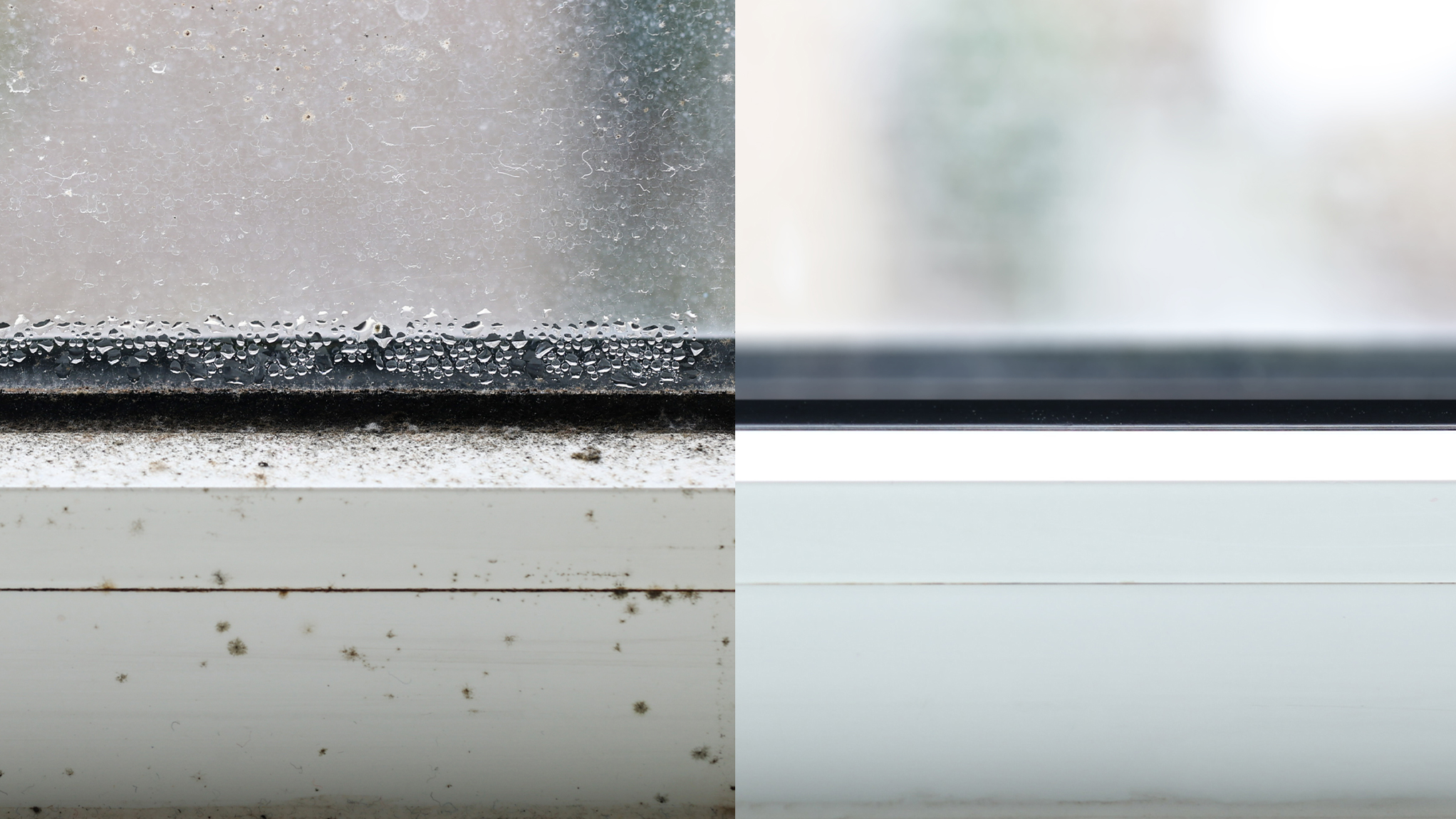

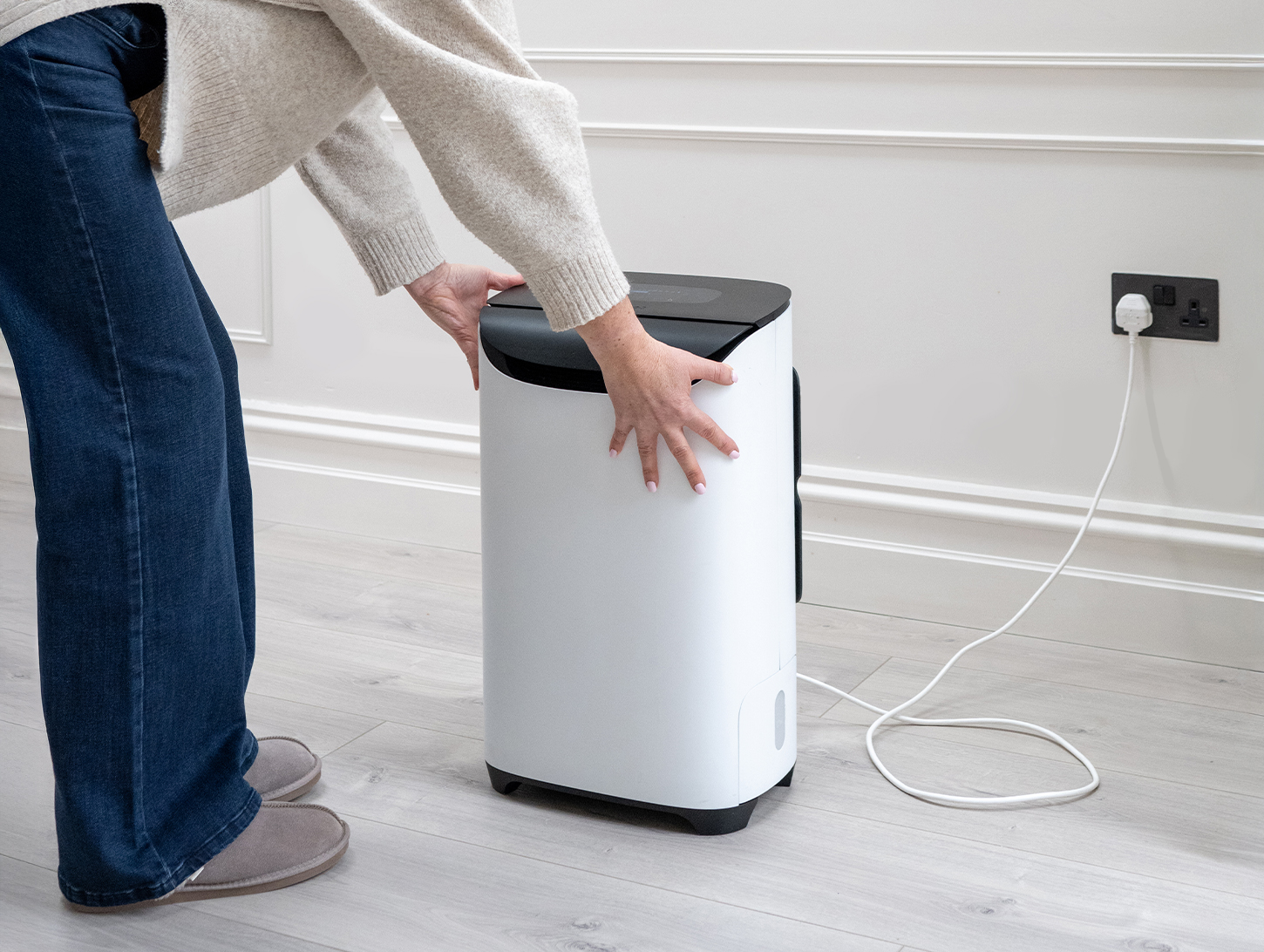
252 responses
I was given a DD8L as a (somewhat early) Christmas gift. A desicant dehumidifier seemed the best option for my house as the temperature rarely goes above 16c with the current gas prices, usually being 14-15c.
I had asked for a dehumidifier, but I didn’t expect something as good as a Meaco so assumed the 16° or higher for a compressor dehumidifier would apply here.
Now I’m not sure if the Arete 25l would have been better (while more costly I’d make up the difference) given its claimed high performance down to 10° after reading “Are desicant dehumidifiers really better at low temperature”
Do you have the temperature performance curve for the Arete 25 anywhere? Or it’s extraction performance at full power in a 15° room?
I’m pretty frugal with my electricity bills using about 4.8 KWh/day in average, so knowing this would be good. In the winter I’ll be using it for laindry and may use the dehumidifier in the (not so warm here) summer, but mainly in winter to keep condensation off the windows and expensive electronic equipment, as well as drying laundry.
If you have the graphs, data or just some advice, that’d be great.
Thank you for your query David,
I’ve sent an email to you.
Regards,
Omar@Meaco.
Hello, I’m looking for a dehumidifier for a static caravan that I’m going to be living in over the winter (in the UK).
The dehumidifier would left on during the day when I’m out and the heating off, also in the evening when the heating is on.
What type of dehumidifier would you recommend, thanks
Thanks for your message,
All the information points towards a desiccant dehumidifier.
There are x3 different types of desiccant dehumidifiers available, they are as follows:
• Meaco DD8L Junior Dehumidifier
• Meaco DD8L Dehumidifier
• Meaco DD8L Zambezi Dehumidifier
The Meaco DD8L Zambezi Dehumidifier is the more technical desiccant we provide, offering features like on and off timers and a display to screen to see the humidity levels. Our other desiccants are the DD8L’s.
The difference between the two DD8L’s are as follows:
– The DD8L has an anti-bacterial coating on the filter giving you cleaner air in return (useful for someone who may have allergies).
Also it has an ioniser, these are negative ions, released by the machine into the air, which attach onto dust, making the dust heavy, as a result falling to the ground (instead of lingering in the air) also useful for anyone with allergies
Hope this helps.
Omar@Meaco
Hi
We have a 4 bed house with condensation on the windows and on the inside walls by the stairs…there is no radiator in this area and as it’s a single brick wall it probably gets a little cold, although I don’t know whether lower than 10 degrees.
I’m really confused between the compressor and the desiccant. If the space occasionally goes below 10 degrees should I get the desiccant even though the majority of the time it will be above 10 degrees?
Which one do people normally buy for the indoors of a house with condensation issues?
Thanks
Thank you for your enquiry,
Temperatures being above 10°c the majority of the time, you can benefit from a compressor, a larger one such as a 25L, suitable for a 4 bedroom (compressor also being the cheaper to run compared to desiccant units)
Compressors are the norm when considering a dehumidifier for our homes, unheated settings like boats, garages and cellars would require a desiccant.
See the latest dehumidifier I’d recommend for you: https://www.meaco.com/products/meacodry-arete-one-25l-dehumidifier-and-air-purifier
I hope this helps.
Omar@Meaco
I am trying to choose between the Arete 12L and the DD8L for a cold(ish) apartment. It’s usually 15-17 C over winter. I think the desiccant might pull the water out quicker at that temperature, but would the Arete still be more cost effective, running longer for the energy price?
Thank you for your enquiry,
Your temperatures are fine conditions for a compressor dehumidifier, it will cost less to run and be able to extract the moisture with ease.
If you’re also looking to heat your apartment then a desiccant will help you achieve this, the DD8L desiccant dehumidifiers give you 10°c-12°c warmer air, however it comes at a higher cost.
Approximate running costs compare as follows:
AreteOne 12L:
4p / hour based on 27.35p / kWh – at 20 °C and 60 % RH
DD8L Junior:
9p / hour based on 27.35p / kWh on fan speed 1 – at 20°C and 60%rh
Hope this helps.
Omar@Meaco
Hello,
We have a good size 4 bedroom, 2 bathroom house in the north of England. We are wanting to reduce condensation on the windows, speed the drying of washing up and just generally remove moisture from the air. (No visible mould issues so far luckily and hoping to keep it this way). We have the heating set to come on if the house drops below 15’ and do try keep the main living spaces around 18’ as we have a young baby. However we may want to occasionally use the unit in the conservatory/utility room which can get colder. Which Maeco unit is best for us? Should we buy one large unit or two smaller (one upstairs/one downstairs) units? I still feel a little unsure about compressor/desiccant options.
Thank you 🙂
Hello,
Thank you for your enquiry, you can use either a 20L or 25L for 4 bedrooms, depending on the current conditions, using two of course will result to a better control of your home. For temperatures below 10°c you’d be best using a desiccant, being any of our DD8L models. Our dehumidifiers are designed to tackle the entire space from one location permitting internal doors be left open for the air to flow and having the right size for the space, a central position such as the landing or hallway.
For a better understanding on which size please click the link below:
https://blog.meaco.com/how-to-choose-the-right-dehumidifier/
Hope this helps.
Omar@Meaco.
Hello, I am in North of England, large 4 bedroom house but only 2 storey. It is a stone house, and in winter, the thermostat showing the house is constantly around 14C, and below at night. There is raising damp on ground floor. My other brand dehumidifier (compressor) freeze a lot last year. Hence I am thinking of a desiccant one instead. Should I put it down stairs in cloakroom toilet with door open (middle of house and near the stairwell to first floor)? Or should I put it upstairs in the bathroom (middle of upstairs, next to stairwell)? Likely will have to use continuous drainage so bathroom would be best?
Thankyou!
Dor
Hi Dor, closest to the source of the moisture would be best. Whether the moisture is coming more from downstairs or upstairs, then locate it on that level.
Hope this helps,
Omar.
Good evening,
I live in a 3 storey/bedroom house with a large hallway which is constantly cold due to the size and that it runs along side the integral garage.
I dry all the laundry inside the house and had a leak in my roof which has led to increased humidity in the bedroom which feels damp and cold as a result .
The house when I’m working away for long periods can drop to 11/12 degrees on occasion.
I wish to reduce the humidity levels in my house and help dry the laundry and hopefully with the cleaner air my house will feel naturally warmer, due to the lack of humidity.
It would be preferable to get a low energy running model for the obvious reasons.
What Meaco model would be best suited for my needs ?
Thanks in advance
Johnny
Johnny,
Because of the fact that it is over three stories and the temperature, you will want an Arete 20 or 25L to do the job.
Chris
Chris
Thank you , managed to luckily get the 25l model within the last few days and its been quite scary how much water it is taking it , but at the same time best thing I have ever bought , the air quality is better , my house feels warmer , couldn’t be happier
Delighted to hear that Johnny.
Thank you.
Chris
Hi Chris,
Your comments are very valuable so after reading some I got more confused with what to buy, a condensor or a dessicant dehumidifier, which is also energy efficient, not too loud, of 10L-12L and with an allergy filter.
Me and my small dog rent a large double bedroom where during winters with the heating on it barely reaches 16-19 degrees C in temperature. On really cold days we have 8-12 degrees in the room.
I’ve noticed dark mould patches on the ceiling, walls and around the windows. Also my windows are always dripping with water and the walls are wet. There is something in the room that makes me sneeze in particular when the heating goes on.
Please also note that I dry my clothes on the radiator in my bedroom.
The humidity is usually at 75% when the heating is on. The dehumidifier would be used mainly in the winter since is not needed in the summer.
So I was thinking of buying an energy efficient dehumidifier which has an air purifing filter like HEPA or what else is better, 10L-12L and one that would not need parts replaced regularily in order to absorb the water or run the machine.
Your help would be greatly appreciated.
Best wishes,
Claudia
Claudia,
You answered your own question very well, you need to get a 12L Arete in there and use the HEPA filter to capture any mould spores.
Chris
Hi
I have rising damp in the living and kitchen area of my small cottage. Living room space is approx 19sqm.I will be addressing the root of the problem, but in the meantime, I want to reduce the moisture levels as much as possible and will continue to use a dehumidifier once the affected areas habe been damp proofed. Which model would you recommend? I am very conscious of the cost of using these products and would prefer an energy efficient model.
Thanks in advance
The Arete range are the cheapest to run, go for a 12L version if the overall cottage is small and you only have a couple of people living there. Use a 20L if you have a lot of washing to dry or there are three or more people living there.
Hi,
Currently considering making a clothes drying closet, using a 60 x 50 x 200 cm kitchen cupboard and putting a d egg humidifier in it with some bespoke airing rack. Are you able to offer any advice which dehumidifier and where to position. Any considerations? Was thinking the dd8l junior.
You cannot use a dehumidifier in a space smaller than 4m². It will just overheat and turn off.
Hi, we live in the south of Spain at the coast and the house is quite humid which is affecting clothes, storage etc. we have a 3 bedroom house and 2 occupants. What model would you suggest as best for our needs. Room temperatures can get down to 11/12 degrees in winter and there is quite a lot of dust in the air.
John,
A 20/25L with a HEPA filter to protect it from the dust.
Chris